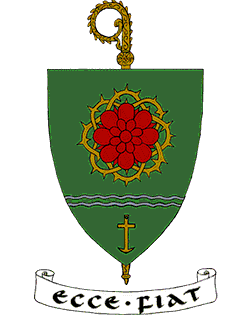Dom Prosper Guéranger (1805-1875) restored monastic life at France after the French Revolution, founding the congregation of Solesmes, to which Our Lady of Clear Creek Abbey belongs.
 When in 1831 he heard that the priory of Solesmes was about to be demolished, the young priest Prosper Guéranger scraped together enough money to rent the monastery and moved in with three companions on July 11, 1833. Guéranger was the community’s superior for twenty-eight years even though he had never received a monastic formation. But the young Prior Guéranger had a very sound sense for all things Benedictine, for the liturgy, and for the spiritual life. He was therefore a living example for his monks. The Holy See recognized the authentic Benedictine nature of the Solesmes community in 1837.
When in 1831 he heard that the priory of Solesmes was about to be demolished, the young priest Prosper Guéranger scraped together enough money to rent the monastery and moved in with three companions on July 11, 1833. Guéranger was the community’s superior for twenty-eight years even though he had never received a monastic formation. But the young Prior Guéranger had a very sound sense for all things Benedictine, for the liturgy, and for the spiritual life. He was therefore a living example for his monks. The Holy See recognized the authentic Benedictine nature of the Solesmes community in 1837.
Guéranger’s daily teaching and many publications were inspired by contemplating the mystery of the Incarnation. The liturgy was a special focus for his attention. He explained liturgical spirituality to the Christian people in The Liturgical Year, which is his most famous book.
At Dom Guéranger’s initiative from 1862 onwards, some of his disciples were sent out to look for the sources of the Church’s liturgical chant, thus setting Solesmes on a path that would lead to the restoration of Gregorian chant and the publication of its repertoire.
He died on January 30, 1875 at the age of 69 and his cause for beatification is now open. The process has passed through the diocesan phase in France and was sent to Rome in 2023.



